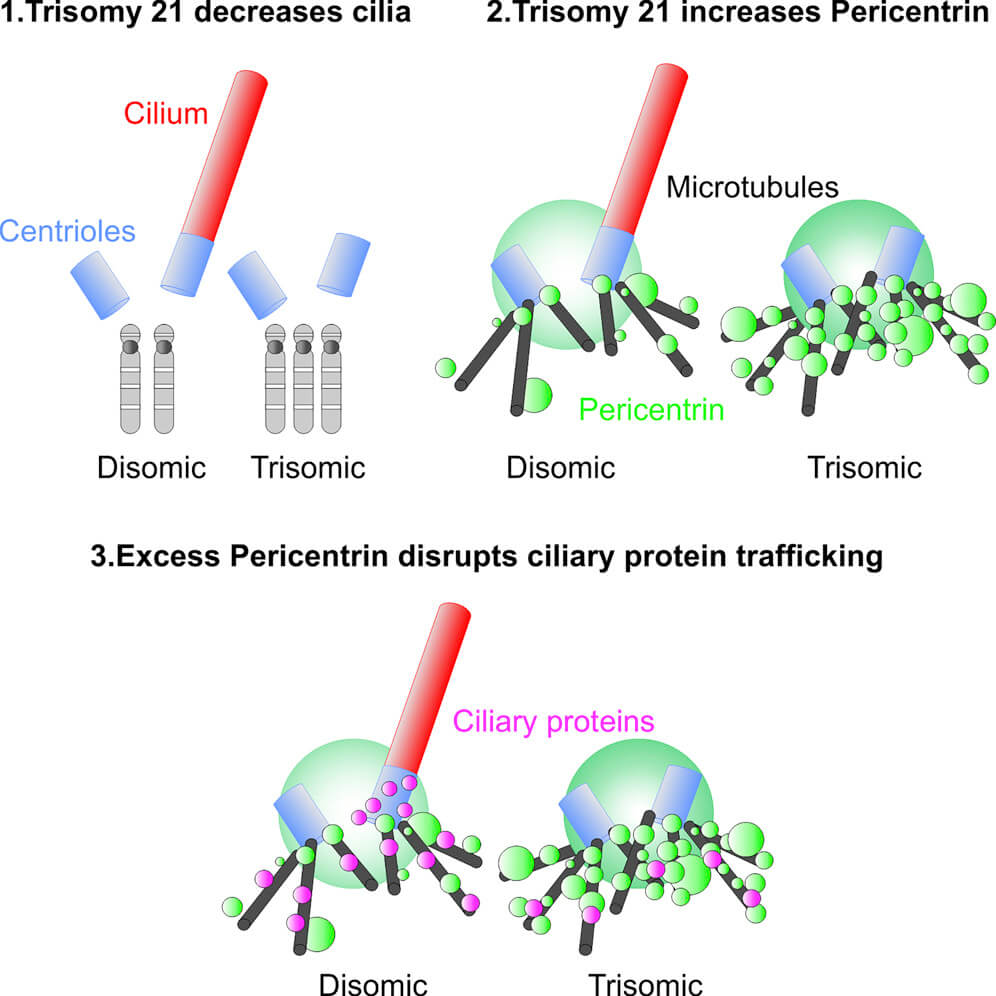Trisomy 21 Represses Cilia Formation and Function
Graphical overview of how trisomy 21 disrupts cilia formation and function.
After observing that Down syndrome and various ciliopathies have many clinical overlaps, including cardiovascular, musculoskeletal, and neurological abnormalities, scientists Domenico Galati, PhD, and Chad Pearson, PhD, decided to investigate cilia function in Down syndrome. They found that trisomy 21 deregulates the expression of numerous ciliary genes, and, more specifically, causes overproduction of the Pericentrin protein. Then, they demonstrated that this increase in Pericentrin causes a reduction in trafficking of ciliary structural and signaling proteins to the cilia, ultimately disrupting ciliary formation and function. Together, these events likely reduce sonic hedgehog signaling, which has been associated with Down syndrome.
Check out the full publication on PubMed.
Trisomy 21 Represses Cilia Formation and Function. Galati DF, Sullivan KD, Pham AT, Espinosa JM, Pearson CG. Developmental Cell. 2018 Sep 10;46(5):641-650.e6. PMID: 30100262.

